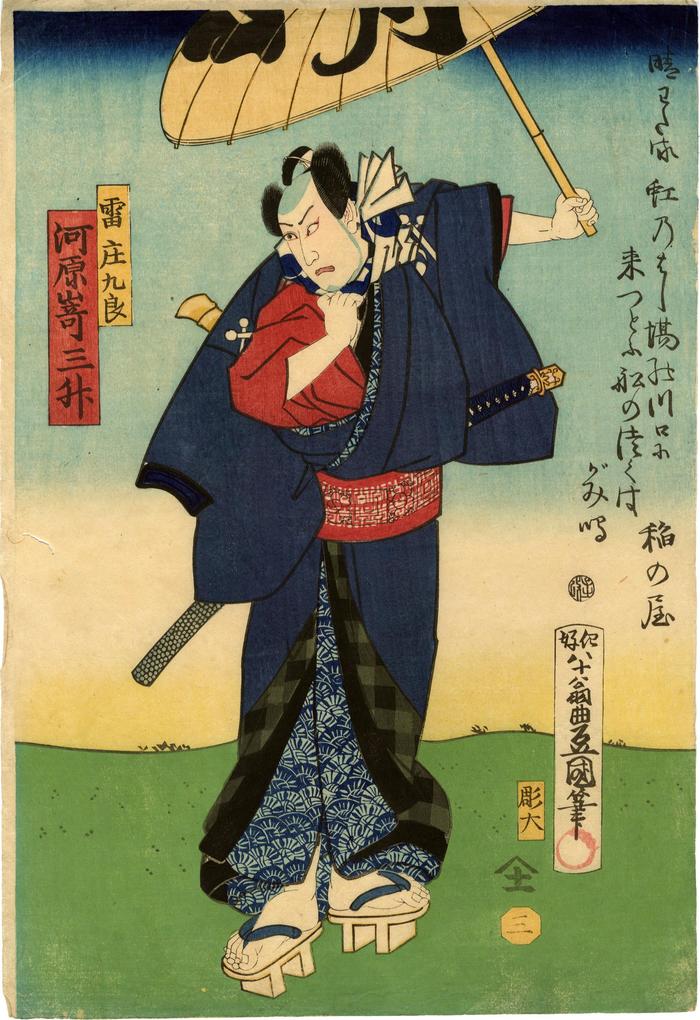Utagawa Kunisada (歌川国貞) / Toyokuni III (三代豊国) (artist 1786 – 01/12/1865)
Kawarazaki Sanshō (河原崎三升) as the otokodate Kaminari Shōkurō (雷庄九郎) from series of 5 actors with umbrellas
11/1864
9.9 in x 14.75 in (Overall dimensions) Signed: konome ni makasete
hachijūhachisai Toyokuni ga
任好八十八歳豊国画
Publisher: Maruya Kyūshirō
(Marks 298 - seal 01-064)
Carver: Hori Dai
Combined censor and seal: aratame 1864/11
Number: 3 (三)
Lyon Collection - a print of Karigane Bunshichi from this series
Lyon Collection - a print of An no Heibei from this series
National Museum of Japanese History (via Ritsumeikan University) Kawatake Mokuami (河竹黙阿弥: 1816-93) wrote the play Shiranami Gonin Otoko in 1862. In the second act all five otokodate appear carrying umbrellas. In an article in the Japan Times from April 14, 2004 Rei Sasaguchi wrote:
"Act II closes with a glorious “presentation” of the five gallantly dressed men, who stand under blossoming trees on the bank of the Inase River, holding umbrellas on which is written “shiranami.” Each man delivers a brief self-introduction, before starting to fight a troop of policemen."
Elsewhere Sasaguchi wrote: "Shira-nami, meaning white waves, is the Japanese reading of two Chinese characters bai-bo. After the Chronicle of the Latter Han Dynasty (25-220) gave the label “baibo” to a group of bandits living in the Baibo Gorge, Shanxi Province, the term came to be used for men who made their living by theft or extortion. In this sense it was transferred to Japan."
****
Kawarazaki Gonjūrō I did not take the Sanshō name until September 1873. However, Sanshō was one of his poetry names. Perhaps that explains the name of the figure holding the umbrella in this print from 1864. Maybe the poem along the right side is his.
****
The otokodate frequently carried shakuhachi flutes both for playing and to as symbols of their authority because they often used them as weapons. In this image the 'puppet' is carrying it on his back and can be seen partially poking out near his right shoulder. (JSV)
actor prints (yakusha-e - 役者絵) (genre)
Kawarasaki Gonjūrō I (初代河原崎権十郎: 9/1852 to 2/1869) (actor)
Otokodate - chivalrous men (男伊達) (genre)
Shiranami Gonin Otoko (白浪五人男) (kabuki)
